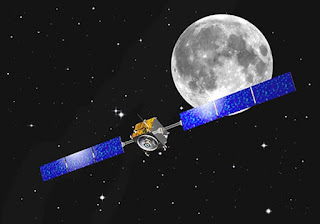INDIA’S MOON AMBITIONS
INDIA’S MOON AMBITIONS
Nikunja Bihari Sahu
In a significant move, India is poised to embark on a new mission to the Moon with the launch of its Chandrayaan-3 sometime in July 2023 from the Satish Dhawan Space Centre in Sriharikota. The prime goal of the mission will be to land some of its crucial instruments safely on the Moon in a landmark demonstration of the technology. The last mission of the series under the name Chandrayaan-2 was sent on July 22, 2019. This mission basically consisted of two modules: one Rover module and the other Lander module. It was inserted into the Moon’s orbit on August 22, 2019, with the Orbiter module successfully revolving around the Moon. However, the prime task assigned to the mission was to softland its Vikram lander and to release the Pragyan rover from it onto the Moon’s surface for physical exploration. However, in an unfortunate turn of events, the Vikram lander crash-landed on the Moon on September 6 , 2019 during the descent stage and lost communication with the ground control. Thus, the Chandrayan-2 mission which cost India Rs 603 crores, hugely fell short of our aspirations and met with partial success only.
India started the Moon race with the launch of the Chandrayan-1 mission on October 22, 2008. The spacecraft was inserted into lunar orbit on November 8, 2008 and started orbiting the Moon collecting valuable information like the Moon’s mineralogical resources through its onboard remote-sensing instruments. In a landmark achievement, a Moon Impact Probe was ejected from the orbiting spacecraft to be deliberately crashed on the lunar surface placing the country’s national flag on the Moon making India the fourth country in the world to accomplish the feat after the USA, Russia and China. Unfortunately, after successfully completing 3400 orbits, the spacecraft went out of control on August 9, 2009. One of the pathbreaking achievements of the mission, however, was the discovery of water molecules on the Moon which the scientists of NASA and ISRO concluded after analyzing the data collected by the mission’s orbiter module. Chandrayan -1 mission cost India 386 crore rupees.
Now, Chandrayan-3 is set to accomplish yet another stupendous feat of soft-landing on our celestial neighbour for safely delivering its scientific instruments on the lunar surface which was not achieved by the two previous missions. If India could do so, it would again be the fourth country in the world to achieve the feat after the USA, Russia and China. While the Chandrayan -1 mission had no provision for a soft-landing on the lunar surface, its successor Chandrayan-2 failed in achieving the feat. Hence , the upcoming mission is expected to augment the unfinished tasks of the two earlier missions and fulfill India’s long-cherished aspirations of a flawless touch-down on the lumar surface.
However, soft-landing on the Moon is practically an uphill task and a difficult technology to master. When the craft would be hurting at an incredible pace towards the Moon accelerated under its gravity, its velocity must be quickly brought down to a safe level and almost to zero on touchdown in order to enable it to have a soft landing. Otherwise, the craft will crashland on the Moon damaging its valuable instruments. However, one of the difficulties in this task is that the Moon has no atmosphere like the Earth and, hence, conventional parachutes could not be deployed to retard the craft’s velocity. Rather, the craft is provided with a number of retro-rockets whose engines continuously fire in opposite direction of the craft’s velocity to slow down its motion. This itself is a very complicated exercise as firing of engines have to be controlled in a very precise and synchronous manner so as to achieve the desired reduction in speed. Because of the complexities involved in the procedure, only three countries of the world have so far been able to accomplish controlled soft-landings on the Moon and that is why the earlier Chandrayan -2 mission failed while trying to achieve the feat. Even just before the Chandrayaan-2, an Israeli spacecraft Beresheet's lander, during its descent, crashed onto the lunar surface on April 11, 2019 and lost contact with the ground control. Considering the difficulties in the technology , it is no surprise to note that, of the 30 soft-landing attempts made by various space agencies of the world so far, more than one-third have ended in failure.
ISRO Chairman, S. Somnath had asserted that the shortcomings of the previous missions will be taken care of in the design of the current mission to enable a flawless performance. Once the craft lands safely on the Moon, a rover will be coming out of it rolling on the vast void lunar surface for physical exploration. The chandrayan-3 mission has not been provided with an Orbiter module as it can still use the orbiter facility of its predecessor Chandrayan-2 (which is still active in the lunar orbit) for communication with the Earth.
The project cost of the mission is a whopping 615 crore rupees. For a developing country like India struggling to fund its various essential sectors like agriculture, education and healthcare, spending a staggering amount like this for the exploration of an alien body should bring some tangible benefits for the nation which all its citizens are to be addressed with.
In recent times, space has become a new avenue for humanity for furthering its scientific pursuits needed to boost its economy by harnessing crucial space-based services and applications. One direct application of space-based platforms is the fleet of communication satellites deployed in space that have been helping us immensely in global communication. Forecasting of weather and remote-sensing of the earth’s surface for meteorology and disaster management and for mineralogical mapping are yet another crucial applications that have directly benefited the country. For continuing our onward march in space exploration, there is no doubt that the Moon will be an important destination for our future space adventures. Moon’s treasure trove of mineral resources and, more importantly, its strategic significance for establishing a nation’s space supremacy, calls for sustained lunar missions for any country. India’s upcoming Chnadrayan- 3 mission is a step forward of realizing this far-reaching goal.
Education Officer
Regional Science Centre
Bhopal





Comments
Post a Comment